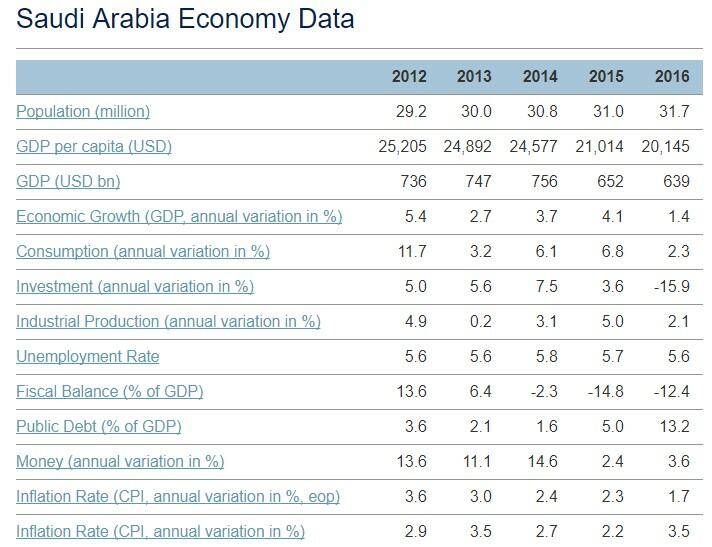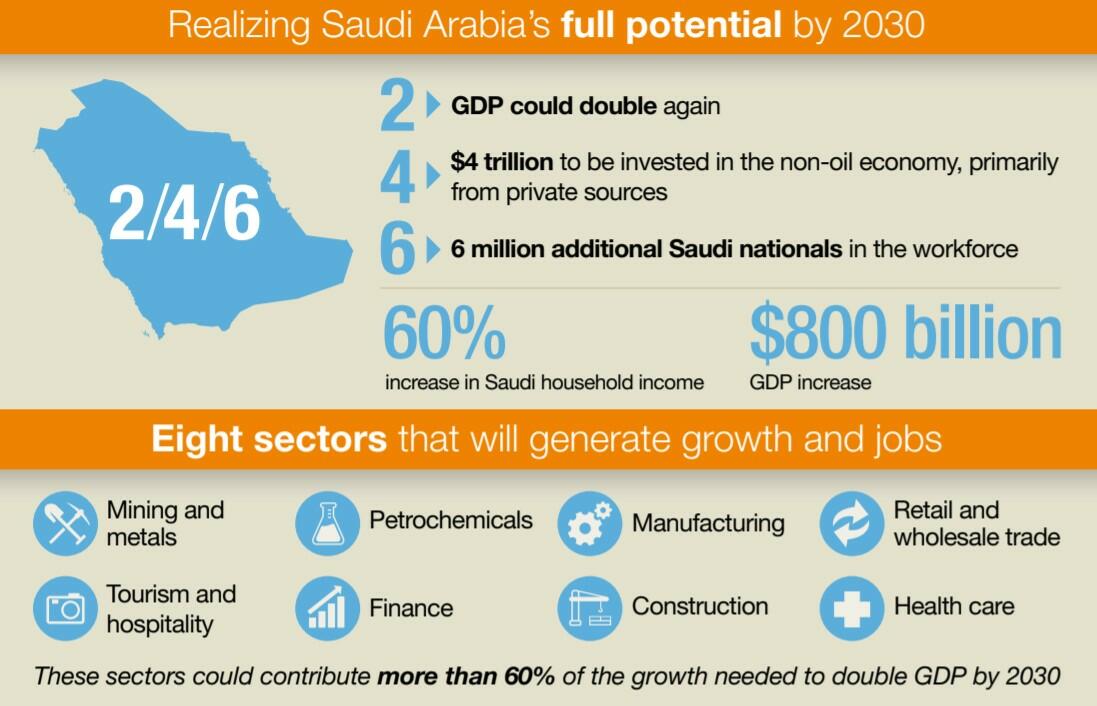
Saudi Arabia is the largest economy in the Gulf Region which is deeply dependent on the export of petroleum. Oil accounts for 62% of government revenue and 44% of GDP in the country (“Saudi Arabia – Market Overview”). The oil price had been slowly rebounding from a collapse in 2014. However, political tensions and budget deficits will force economic growth to remain around 1.5% and are projected to grow to 2.3% in 2019 (“Saudi Arabia Economic Outlook”). Saudi Arabia recently announced its 2018 budget which is a record $261 billion with a projected revenue of $209 billion. It is an indication that the country is expecting significant revenue growth in the upcoming years from economic diversification and expansion with an optimistic 3.7% GDP increase from non-oil sectors. The kingdom will increase domestic revenue by implementing value added taxes and additional fees (Wald).

Since petroleum is a commodity which has been experiencing volatile conditions affected by geopolitical and environmental factors, the Saudi Arabian government is attempting to use the massive funds obtained from exports to reinvest into the national economy. Through a broad spectrum program known as Vision 2030, the government is attempting to revitalize and form whole new economic or production sectors as well as invest in infrastructure and human capital. This is known as the process of diversifying the national economy which would allow it to remain flexible (“Beyond Oil: Saudi Arabia’s 2030 Economic Vision”). It helps protect against future crises as well as preparing the country as the modern global economy evolves in new sectors. The vision contains both long-term and short-term objectives. Despite an overwhelming support for the policy program, it maintains some level of economic controversy as it requires aggressive spending in a time of relatively low oil export profits. Many of the objectives are seen as unachievable or require such rapid economic shifts that it may have a profound destabilizing effect.

There are a number of sectors which Saudi Arabia will seek to expand in the next decade to diversify its economy. There will be substantial investment in other industries such as mining, metallurgy, and petrochemicals. The country’s natural resource deposits outside of the oil and natural gas industries are underdeveloped. Expansion in these sectors could potentially triple their value by providing over 500,000 new jobs and increasing the GDP by $30 billion. Also, Saudi Arabia is attempting to expand manufacturing since the country currently heavily depends on the import of physical goods to fulfill demand. This aspect will focus on commercial market products as well as supplies for industries. It will result in job creation as well as legal and investment protections that will overcome challenges to supply chain and international trade procedures (McKinsey Global Institute).
Saudi Arabia is actively focusing on ensuring the well-being of its population through the creation of a productive and skilled labor force. Sectors which require human participation will be expanded through investment into retail markets, tourism and hospitality, and public services such as healthcare. It is estimated that combined these areas which have been neglected during the years of the crisis could produce millions of job positions and stimulate domestic economic spending. The challenges of the budget deficit that the country has been facing present difficulties in financing the expansion of the economy. The government will attempt to generate funding by attracting foreign investment. For example, the national oil giant Saudi Aramco will host an initial public offering (IPO) for 5% and create a sovereign wealth fund of $2 trillion for the country’s investment activities (“Saudi Arabia: Market Profile”). These reforms will present countless opportunities for the Saudi economy in the 21st century.
Works Cited
“Beyond Oil: Saudi Arabia’s 2030 Economic Vision.”Al Jazeera. 2017, Web.
McKinsey Global Institute. “Saudi Arabia Beyond Oil: The Investment and Productivity Transformation.” McKinsey & Company. 2015, Web.
“Saudi Arabia Economic Outlook.”Focus Economics. 2017, Web.
“Saudi Arabia: Market Overview.”export.gov, 2017, Web.
Wald, Ellen. “Saudi Arabia’s 2018 Budget Is The Country’s Largest Ever.”Forbes. 2017, Web.